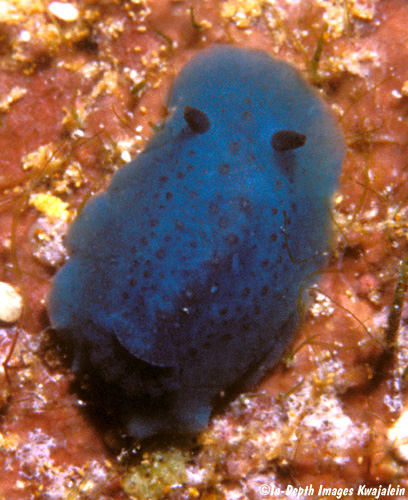
The two similar species Doris pecten and D. viridis are sometimes very difficult to differentiate from external characters. Both can be blue, although it seems D. pecten is always dark blue while D. viridis ranges from greenish blue through green to orange. Young (1967), studying these species at Enewetak Atoll when they were considered to belong to the genus Doriopsis, provided three additional characteristics aside from the blue or green color (he did not see orange specimens) to differentiate them. First, the blue D. pecten feeds on a dark blue sponge, identified in Young's paper as Terpios aploos (but which I have seen identified more recently as Terpios granulosa) while D. viridis appears to feed exclusively on an orange encrusting sponge Young reported as Prianos phlox and which we have noticed closely matches the color of the orange specimens of D. viridis. Second, the eggs produced by D. viridis are distinctly larger than those of D. pecten. Third, D. viridis has larger radular teeth but fewer teeth per row than simlar sized specimens of D. pecten. One additional bit of confusion comes from egg color (see below).
Doris pecten is recognized by its dark blue body. It is nearly always found on a dark blue sponge Terpios granulosa, upon which it is very hard to see. They live mostly in the intertidal and very shallow subtidal, including the reef quarries on Kwajalein's intertidal reef, but we have seen specimens down to a depth of about 8 meters. Twelve measured specimens ranged from 3 to 15mm in length. It was first reported in the Marshalls from Enewetak Atoll as Doriopsis pecten by Young (1967).

The next photo shows the peculiar transverse gills that was considered characteristic of the genus Doriopsis. As I write this, the World Register of Marine Species (WORMS) considers D. pecten and D. granulosa to be in Doriopsis while D. viridis with similar gills is listed in Doris. Until the situation is straightened out, we will follow Gosliner et al (2018) and stick with Doris for all three species.
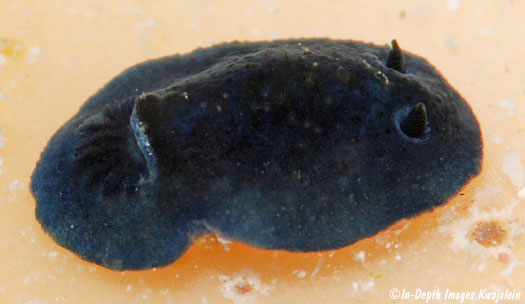
Often the nudibranch blends in so well on its normal food sponge, the only way it gets noticed is by the presence of egg masses in the vicinity, which are, as in the photo below, usually not deposited directly on the prey sponge. The two egg masses here are probably just different ages; it is likely the lower one was put down first and the developing larvae may be getting ready to hatch out. One added bit of confustion about this species concerns egg color. D. pecten we have found in Hawaii and the Philippines always have pure white eggs, while those in the photo below are yellow to light gray. This photo was shot in 1982 at a depth of about 4m on the lagoon side of Enewetak Island, right off the beach fronting the Mid-Pacific Research Lab.
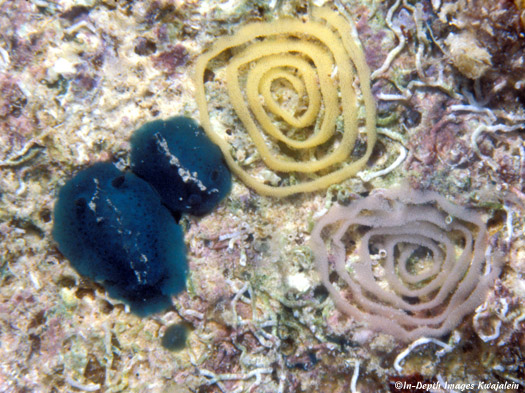
Zooming in on the photo above you can see the small size of the eggs of this species. A separate page compares egg masses of Doris pecten and D. viridis.
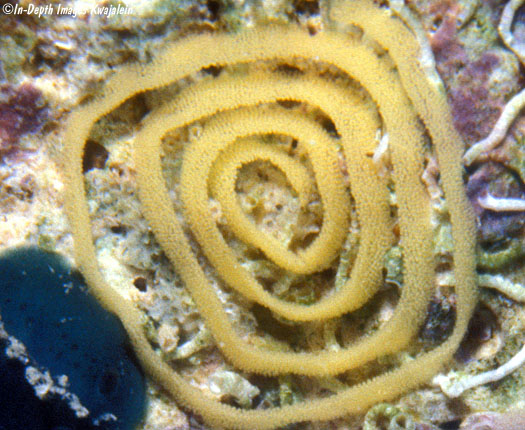
The specimen below was large for this area at about 15mm long. Just to right of the animal is what appears to be a whitish patch of rock that the nudibranch grazed the blue sponge from.
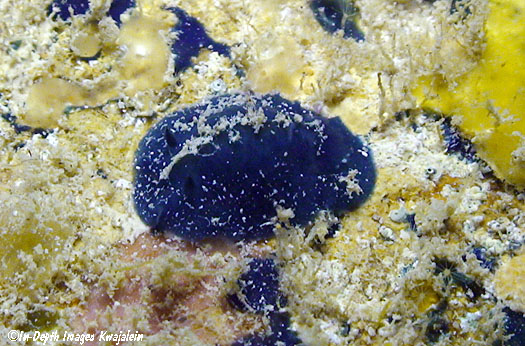
Created 11 December 2006
Updated 29 September 2023